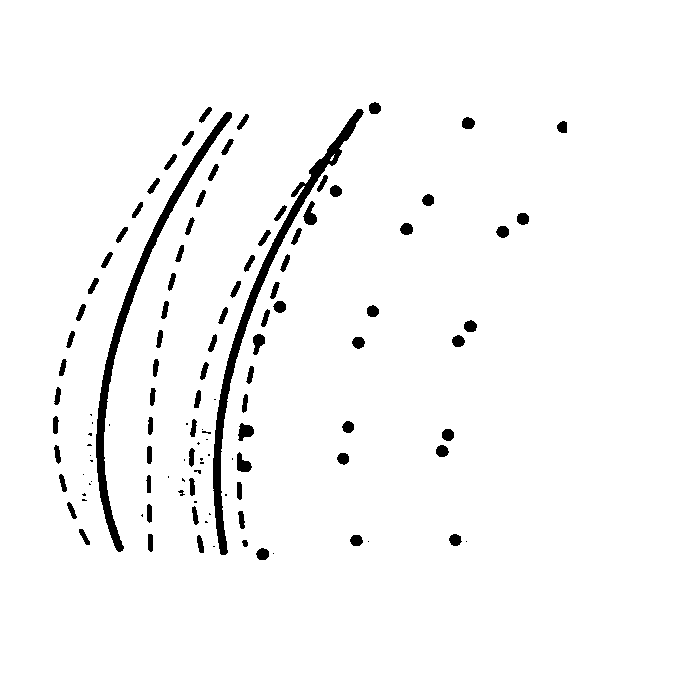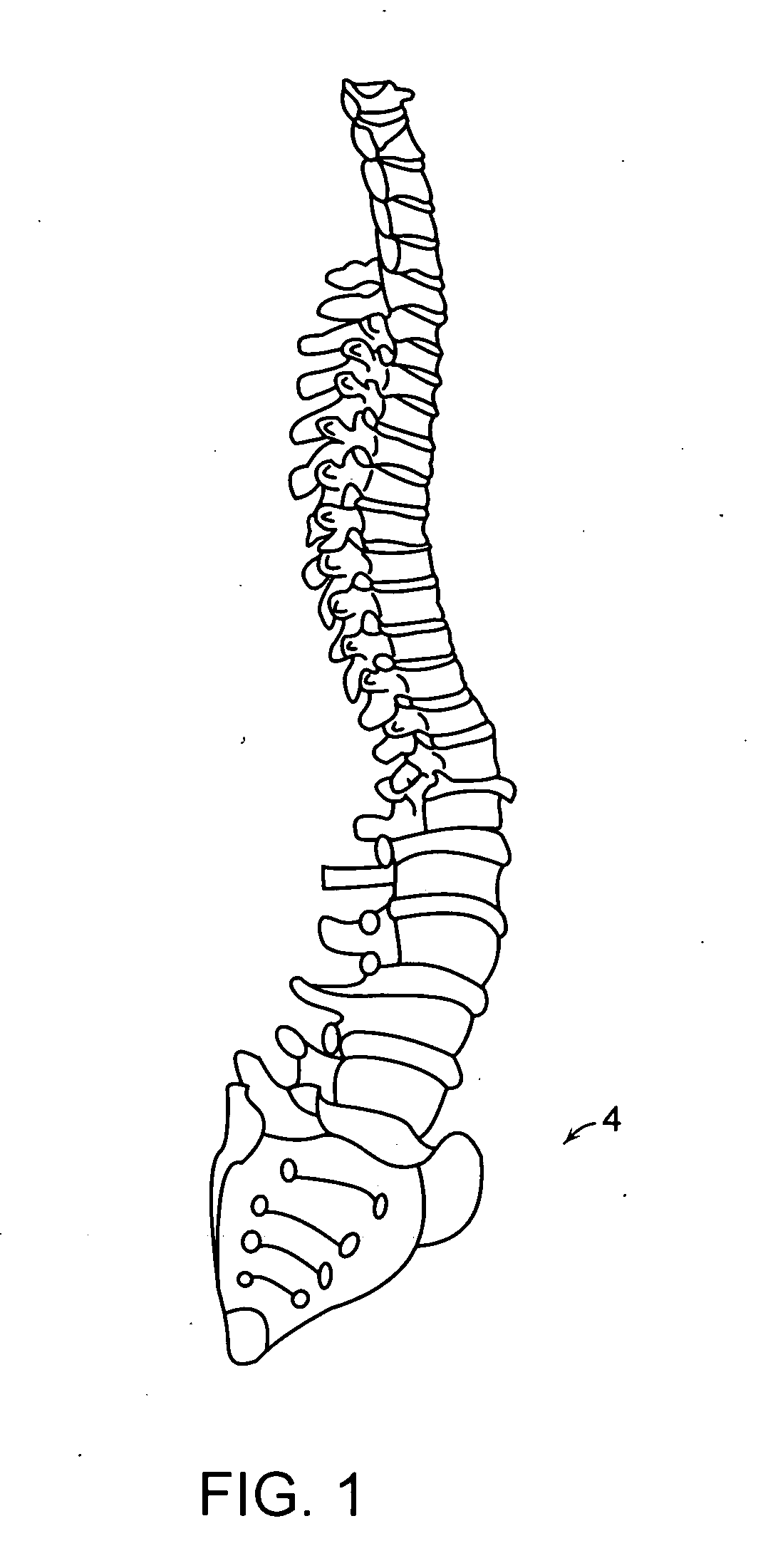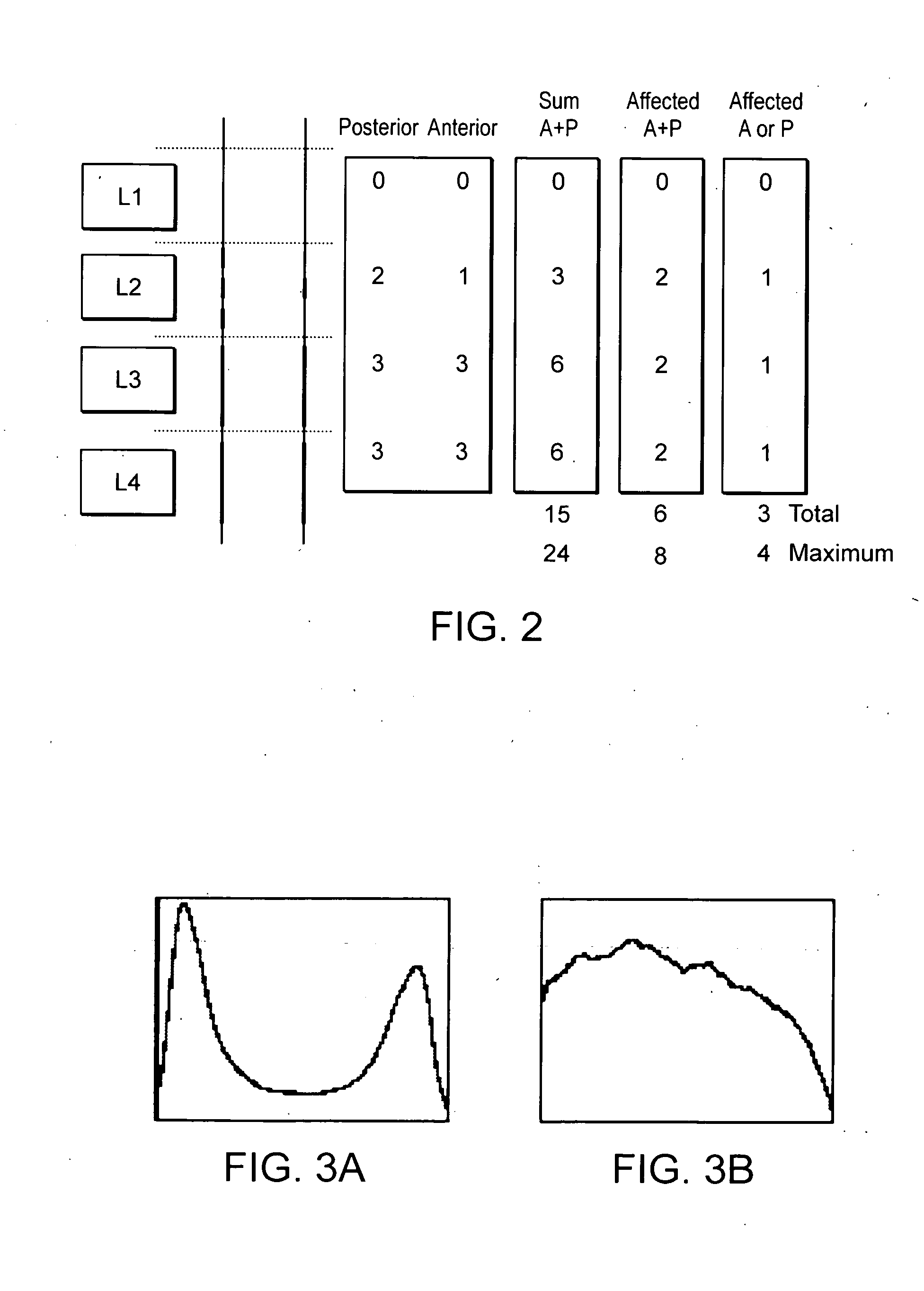Method of deriving a quantitative measure of a degree of calcification of an aorta
a quantitative measure and aortic valve technology, applied in the field of deriving a quantitative measure of the degree of calcification of the blood vessel, can solve the problems of not being able to describe, no methods available at present that use inpainting to give more than, and not being able to be used in more routine diagnoses
- Summary
- Abstract
- Description
- Claims
- Application Information
AI Technical Summary
Benefits of technology
Problems solved by technology
Method used
Image
Examples
Embodiment Construction
[0039] To generate a quantitative measure of the degree of calcification in the aorta the following steps can be taken:
[0040] 1. Obtain lateral 2-D x-ray images of the spine.
[0041] 2. Estimate the location of the aorta.
[0042] 3. Detect calcified areas.
[0043] 4. Obtain a quantitative measure of the degree of calcification.
[0044] 5. Output the result.
[0045] The present invention is primarily concerned with Steps 3 and 4, the actual process involved in detecting calcified areas of an aorta and obtaining a quantitative measure of the degree of calcification.
[0046] Methods of obtaining x-ray images are well known. This step will therefore not be described herein.
[0047] In the described embodiment, lateral 2-D x-rays are used to provide a cost-efficient way of delivering reliable and easily reproducible data which may be used to extract information regarding the degree of calcification of the aorta.
[0048] Calcifications usually can be depicted in x-rays as small and usually elong...
PUM
| Property | Measurement | Unit |
|---|---|---|
| area | aaaaa | aaaaa |
| signal to noise ratio | aaaaa | aaaaa |
| noise ratio | aaaaa | aaaaa |
Abstract
Description
Claims
Application Information
 Login to View More
Login to View More - R&D
- Intellectual Property
- Life Sciences
- Materials
- Tech Scout
- Unparalleled Data Quality
- Higher Quality Content
- 60% Fewer Hallucinations
Browse by: Latest US Patents, China's latest patents, Technical Efficacy Thesaurus, Application Domain, Technology Topic, Popular Technical Reports.
© 2025 PatSnap. All rights reserved.Legal|Privacy policy|Modern Slavery Act Transparency Statement|Sitemap|About US| Contact US: help@patsnap.com



